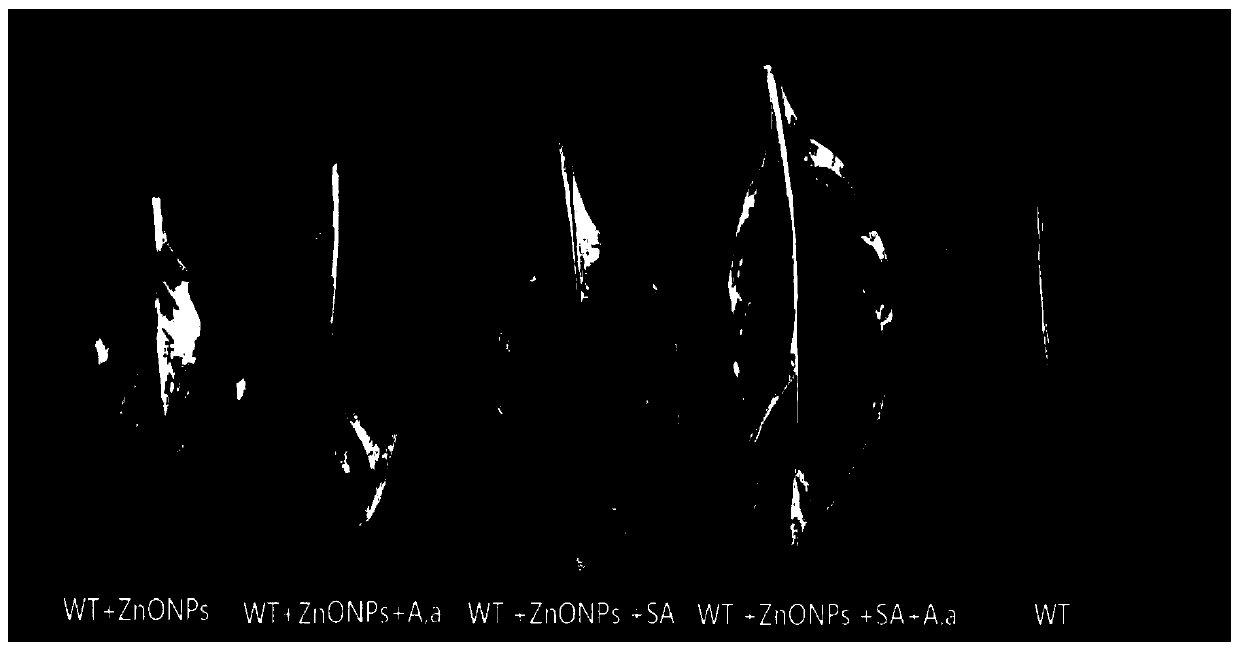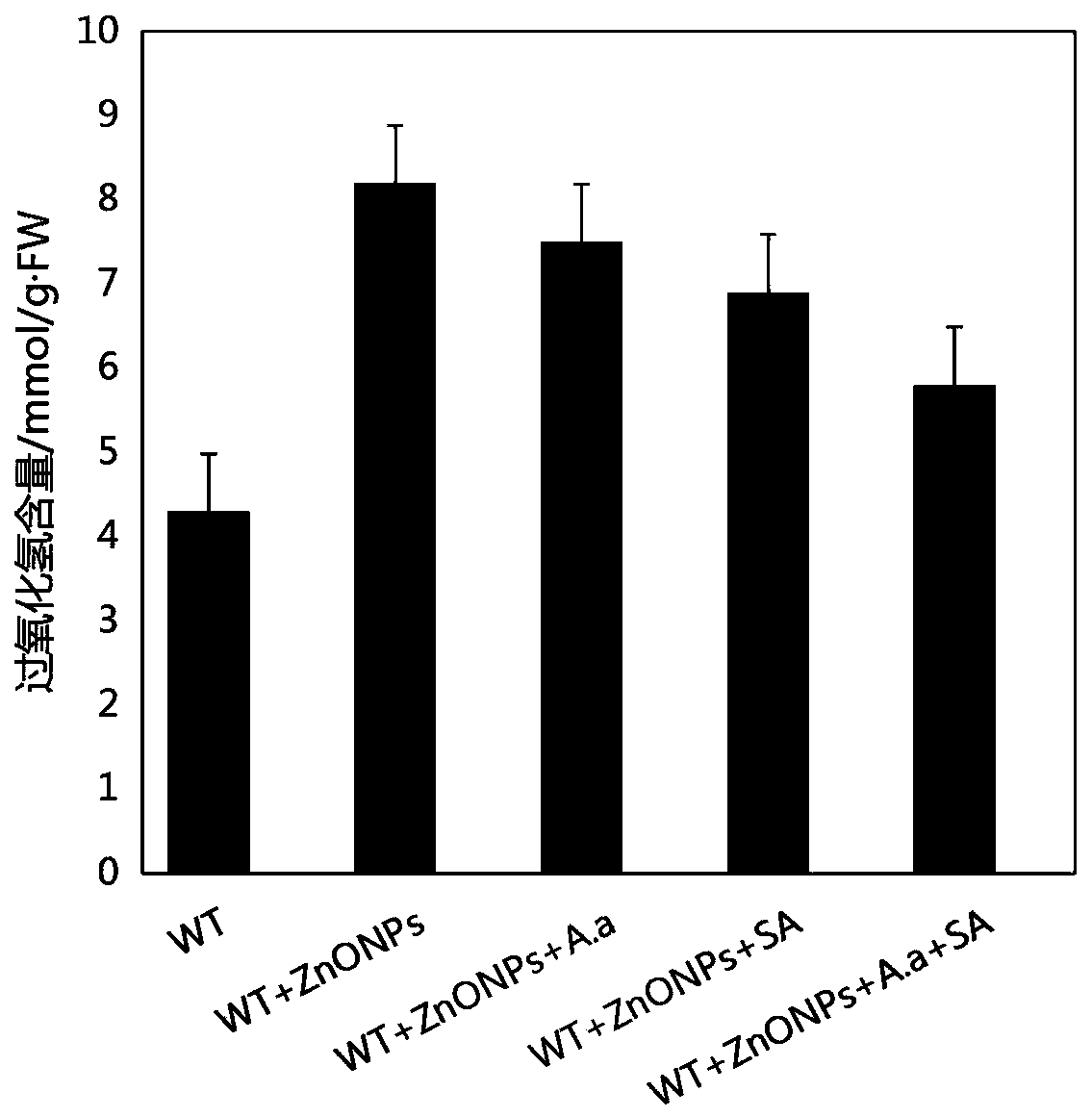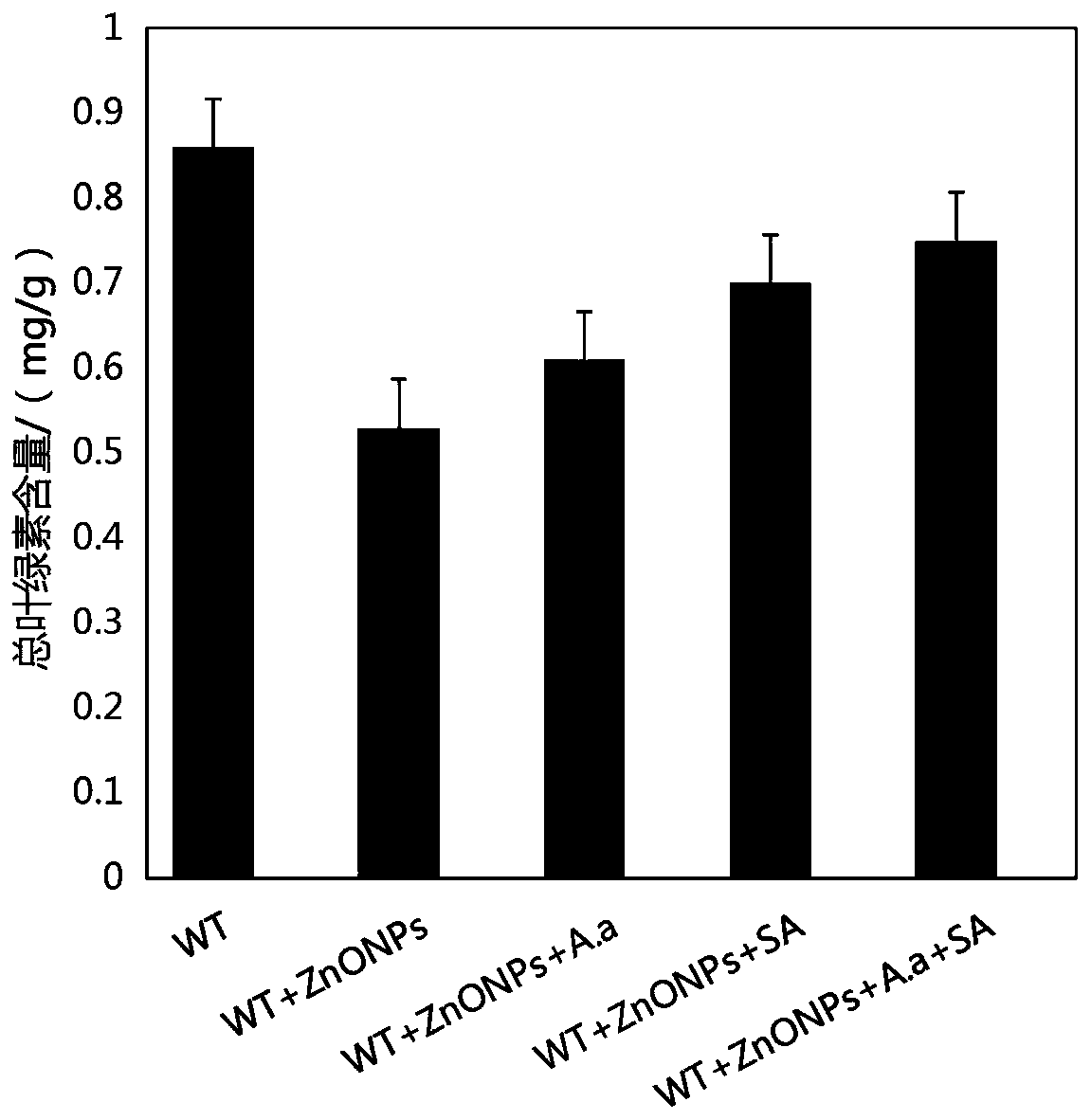Joint relieving method for stress damage of nanometer zinc oxide to plants by utilizing aspergillus aculeatus fungus and salicylic acid
A technology of nano-zinc oxide and Aspergillus aculeatus, which is applied in the field of plant-microbe joint restoration of nano-metal pollutants, can solve problems such as liver damage, increased embryo toxicity, and changes in soil bacterial communities, achieving low cost, good application prospects, easy-to-handle effects
- Summary
- Abstract
- Description
- Claims
- Application Information
AI Technical Summary
Problems solved by technology
Method used
Image
Examples
Embodiment 1
[0032] A method for alleviating the stress damage of nano-zinc oxide to plants by using the fungus Aspergillus aculeatus and salicylic acid, comprising the following steps: selecting healthy wild-type tobacco seedlings and transplanting them into the soil containing nano-zinc oxide, and the nano-zinc oxide in the soil The content of zinc oxide is 18mg / kg, add fungus Aspergillus aculeatus liquid and salicylic acid solution in the rhizosphere of plant, water, cultivate and grow, the concentration of fungus Aspergillus aculeatus liquid is 10 7 cfu / mL, add 15mL to each plant; the concentration of salicylic acid solution is 1.5mmol / L, add 100mL to each plant.
[0033] figure 1 The leaves were taken on the 15th day of planting, and the hydrogen peroxide content and chlorophyll content were measured on the 15th day of wild-type tobacco seedling growth, see figure 2 and image 3 . (WT+ZnONPs+SA+A.a in the figure is embodiment 1)
Embodiment 2
[0054] A method for alleviating the stress damage of nano-zinc oxide to plants by using the fungus Aspergillus aculeatus and salicylic acid, comprising the following steps: selecting healthy wild-type tobacco seedlings and transplanting them into the soil containing nano-zinc oxide, and the nano-zinc oxide in the soil The content of zinc oxide is 5 mg / kg, add fungus Aspergillus aculeatus liquid and salicylic acid solution in the rhizosphere of plant, cultivate and grow, the concentration of fungus Aspergillus aculeatus liquid is 106cfu / mL, every plant adds 20mL; The concentration of the salicylic acid solution was 2mmol / L, and 50mL was added to each plant.
Embodiment 3
[0056] A method for alleviating the stress damage of nano-zinc oxide to plants by using the fungus Aspergillus aculeatus and salicylic acid, comprising the following steps: selecting healthy wild-type tobacco seedlings and transplanting them into the soil containing nano-zinc oxide, and the nano-zinc oxide in the soil The content of zinc oxide is 30mg / kg, adds fungus Aspergillus aculeatus liquid and salicylic acid solution in the rhizosphere of plant, cultivates and grows, and the concentration of fungus Aspergillus aculeatus liquid is 10 8 cfu / mL, add 10mL to each plant; the concentration of salicylic acid solution is 1mmol / L, add 200mL to each plant.
[0057] After testing, in Example 2 and Example 3, the hydrogen peroxide content and chlorophyll content measured on the 15th day of wild-type tobacco seedling growth are similar to those in Example 1.
PUM
 Login to View More
Login to View More Abstract
Description
Claims
Application Information
 Login to View More
Login to View More - R&D
- Intellectual Property
- Life Sciences
- Materials
- Tech Scout
- Unparalleled Data Quality
- Higher Quality Content
- 60% Fewer Hallucinations
Browse by: Latest US Patents, China's latest patents, Technical Efficacy Thesaurus, Application Domain, Technology Topic, Popular Technical Reports.
© 2025 PatSnap. All rights reserved.Legal|Privacy policy|Modern Slavery Act Transparency Statement|Sitemap|About US| Contact US: help@patsnap.com



